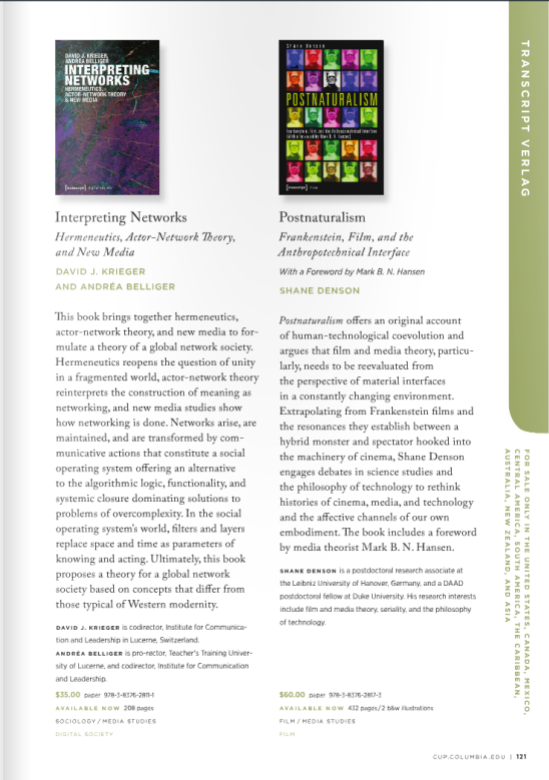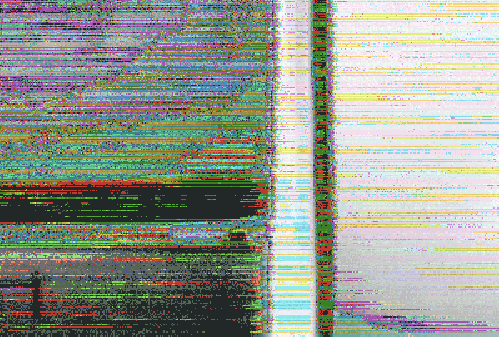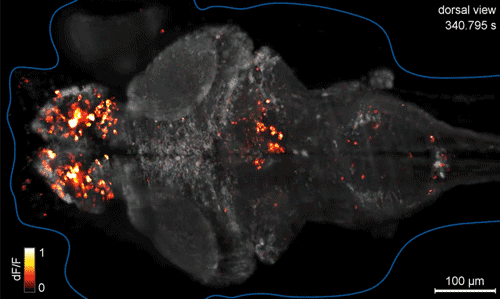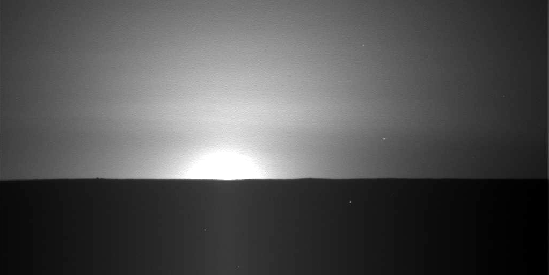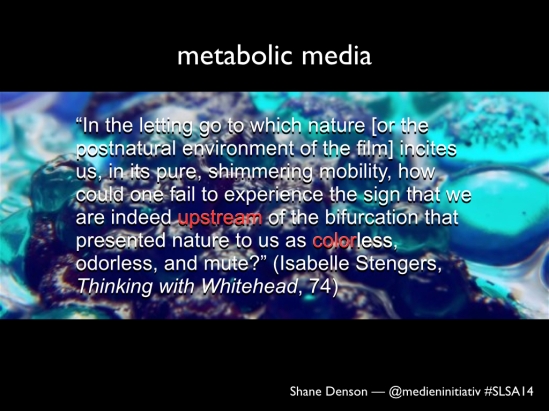I am very happy to announce that the panel I will be chairing at this year’s SCMS conference, “Post-Cinema and/as Speculative Media Theory,” has been chosen as one of eight panels to be officially sponsored by the Media and the Environment Special Interest Group. The group, of which I am proud to be a member, defines its mission thus:
The Media and the Environment Scholarly Interest Group (MESIG) aims to provide a forum for shared discussion of research and pedagogy at the intersections of media and environment. We believe that nearly every aspect of film and media practice and studies–from materials manufacturing and physical infrastructures, to filming locations and resources, to audiovisual aspects and themes, and beyond to marketing, preservation, obsolescence, and also scholarly discourse–touches matters of the environment and sustainability. Various approaches from an environmentalist perspective have been taken and more are still being developed to investigate how our mediated cultural practices have, do, and will position humans in relation to physical and natural worlds. How can we further film and media studies as a global–read planetary–concern, focused on dire changes and issues affecting the Earth and our natural surroundings? We believe our field has much to contribute to discussions and findings more frequently held in and attributed to science disciplines and Environmental Studies. With this Scholarly Interest Group, we seek to cultivate the study of significant matters of media and the environment within our field and through the representative collective that is SCMS.
I am honored that our panel — which includes one explicitly environmental film/media theorist (Adrian Ivakhiv) but also three others (Steven Shaviro, Patricia Pisters, and Mark Hansen) who are helping to define the subject of post-cinema in broadly ecological terms — has been chosen for sponsorship by the Media and the Environment SIG, and I am grateful for their recognition of the topic’s relevance for our ongoing attempts to rethink the relations between humans, our media technologies, and the environments that we inhabit, access, and transform with and through them.
Here, finally, is a list of all eight panels sponsored by the SIG:
A23: Ecocriticism
F8: Fossils, Films, and Sedimentation: Ecocritical Approaches to Archival Moving Images
G4: Media Waste: Technological Systems and the Environment
H22: Excess Hollywood: Economies of Waste in Media Industries
J12: Engaging Ecocinema: The Affects and Effects of Environmental Documentaries
J17: Media Environments
K7: Post-Cinema and/as Speculative Media Theory
P4: Cinema in/of the Anthropocene

